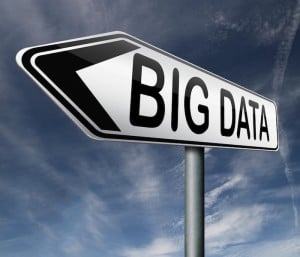 When I was an undergraduate in Boston many years ago, I worked for a hotel to help pay for my education. It was a beautiful waterfront property that maintained an obsessive focus on service and experience. Its approach to service was not merely to accommodate guest needs and requests, but, as was constantly repeated and practiced, to anticipate them: to tacitly understand guests and their context so well that staff knew what they needed or wished for, often before the guest was cognizant of or able to articulate it himself.
When I was an undergraduate in Boston many years ago, I worked for a hotel to help pay for my education. It was a beautiful waterfront property that maintained an obsessive focus on service and experience. Its approach to service was not merely to accommodate guest needs and requests, but, as was constantly repeated and practiced, to anticipate them: to tacitly understand guests and their context so well that staff knew what they needed or wished for, often before the guest was cognizant of or able to articulate it himself.

This approach took many forms and was executed through unobtrusive and keen observation by staff— from booking and reservations to arrival, accommodations, dining, departure, and follow-up. Some of the practices were customary, such as the hands that appear unnoticed and seemingly out of nowhere to seamlessly accept the coat as it slips from the diner’s back or the menu or check that arrives seconds before the customer wants it. Others were purely experiential and aesthetic: the proximity of the front desk to the elevators and the pleasing sense of space, intimacy, and structure achieved through careful design and décor. And still others were more personal, such as a call from the concierge offering to get tickets to a show she thought a guest might enjoy based on a passing comment during check-in or a small refrigerator that, without prompting, magically appeared in the room of a guest in order to store his fragile medication.
The emphasis on anticipation was a valuable lesson I’m often reminded of in the experience and lifecycle marketing work we provide to brands. As marketers, we have arrived at a point where accessible and robust data, analytics and content distribution platforms are available to observe behavioral clues, tacitly anticipate customer needs, and respond to them in meaningful and mutually beneficial ways.
Consider where we have come in lifecycle marketing alone. In digital, this was once the domain of email marketers. Armed with access to consumer-level data such as transaction history, preferences, demographics and a cost-effective messaging platform, they could turn out reasonably effective up-sell, cross-sell, or shopping cart abandonment programs. The primary shortcoming of this approach, however, was that it was constrained to a single isolated channel and usually on a specific date. The campaign-centric nature focused on a disconnected phase in the customer lifecycle, was deployed perhaps a couple of times a month or quarter and did not take into account the effect that experiences in other channels might have.
Lifecycle marketing today is much more complex, context rich and comprehensive. Customer engagement is distributed broadly across mobile apps, search and display, social, website and video, in addition to email and traditional channels like brick-and-mortar, call center, and direct mail. Messaging, communication and experience opportunities are also greatly expanded, particularly with in-app messaging and site-side personalization as more brands provide hosted offerings and services that continually draw customers back, such as bill pay and account management. Customer behaviors and expectations demand that rather than focusing on a few stages, lifecycle strategies are integrated and coordinated throughout customer journeys and channels as services — from awareness and evaluation to conversion, usage, retention, advocacy and reactivation.
Brands ranging from Starbucks and Nike to American Express and Virgin America are capitalizing on these service opportunities as a way to drive value and revenue. This can take many forms, from an app that makes it easier and more pleasurable for customers to engage and transact to a home page that dynamically serves content based on transaction and/or engagement history to models that identify high-value at-risk customers based on those same attributes and clues. Here are but a few recent examples:
- To drive conversion, usage and subscription renewal, a major software provider implemented a behavior-based, “always-on” triggered lifecycle communication strategy to anticipate and address customer needs across B2B and B2C segments. As a result, more than 90 percent of all targeting and content was dynamically generated based on customer journey stage, consumer-level app usage, cross-channel brand engagement and account information. This move in itself greatly reduced production and operational time, enabling internal marketing teams to focus on strategy, analysis and optimization. The highly informational content delivered insights on how customers could utilize the product and service more effectively based on unique individual engagement and usage history, while predictive models were introduced to identify at-risk customers based on the same variables.
- A Fortune 100 brand embarked to better leverage video for customer support and service. After identifying need states across each phase of the customer lifecycle, video content was then plotted to address those needs — such as brand benefits, product selection, registration, account setup and product features and configuration. Leveraging Web analytics and content management, contextually aware video links and CTAs could then be presented to the customer on the home or account page based on her phase in the customer journey and behavior, thereby anticipating needs and delivering appropriate content and solutions to address them.
- A leading B2B software provider offering a broad range of products and extensive website content recognized the need to better tailor content for visitors so they could quickly find the information, material and solution most appropriate to their needs. After identifying key visitor and target segments, lifecycle phases and associated need states, a strategy was devised and embarked upon to identify visitor behaviors and profiles and serve appropriate content on the site, while CRM and Web intelligence data worked in tandem to fuel and coordinate lead nurturing, cross-sell and up-sell activities.
Leading brands are seizing the opportunity presented by access to data, analytics and content distribution platforms to drive conversion, renewal and customer lifetime value while lowering acquisition and customer support costs.
Like a service-obsessed hotelier, they recognize that in addition to the core products they sell or services they offer, the value exchange is also about “soft” service-based considerations aimed at making product usage, brand engagement and customers’ lives a bit easier, more rewarding and more enjoyable. Unlike a five-star hotel, the inherent scalability of data and technology doesn’t just make that level of service available to all: It mandates it.
![The State of Data-Driven Marketing [+Expert Insights]](http://53.fs1.hubspotusercontent-na1.net/hubfs/53/00-Blog_Thinkstock_Images/Data-Driven_Marketing_Edit.jpeg)

![Pursway Helps Brands Identify and Market to the Friends of Their Fans [Tech Profile]](http://cdn2.hubspot.net/hub/53/file-1895116102-jpg/blog-files/ran-shaul2-copy.jpg)





